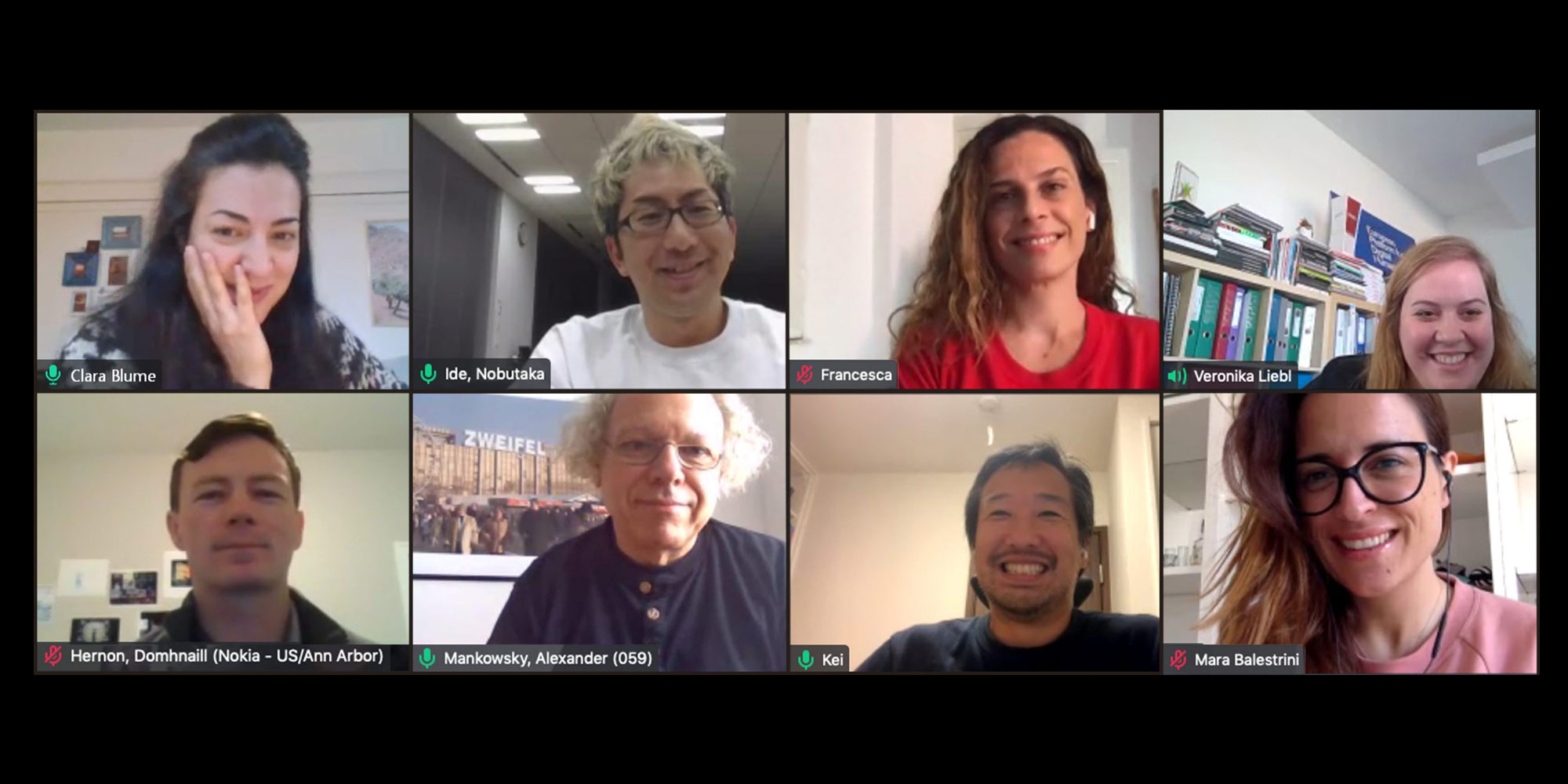2020 S+T+ARTS Prize Jury
All submissions are judged by a jury to decide on the two prize-winning projects and up to ten honorary mentions.

Mara Balestrini (IT) is a Human Computer Interaction (HCI) researcher and a technology strategist. She is currently CEO at the innovation agency Ideas for Change and a co-founder of SalusCoop, the first Spanish cooperative for citizens’ health data. Mara’s work sits at the intersection of civic technology, design and Action Research. She has authored over 30 publications on these subjects and coordinated projects such as Making Sense EU, Bristol Approach and #DataFutures. Mara earned a PhD in Computer Science from the Intel Collaborative Research Institute on Sustainable Connected Cities at University College London. Her work has been awarded at ACM CHI, ACM CSCW, Ars Electronica, among others, and featured in international media such as the BBC, The Guardian, The Financial Times and El País.
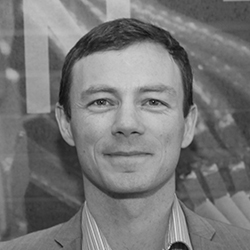
Domhnaill Hernon (IE) is an award-winning technology, innovation and creativity executive. Domhnaill received an undergrad in Aeronautical Engineering and a PhD in Aerodynamics from the University of Limerick and an executive MBA from Dublin City University, Ireland. He previously led R&D organizations and developed and executed strategies to overcome the “innovation valley of death”. He is Head of Experiments in Art and Technology (E.A.T) which is a new initiative he founded to fuse art and engineering/science to develop solutions that humanize technology. Domhnaill’ s work has been featured in Wired Magazine, Times Square, SXSW, Nasdaq, MWC and Inspirefest to name just a few and he advises cultural programs globally.
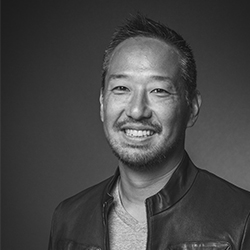
Kei Shimada (JP/US) is a Japanese American entrepreneur, angel investor and currently the leader of the Digital Makers Lab at IBM Japan. In his current role, he is leading a group of talented engineers in creating world first, region first, industry first innovative products and solutions through co-creation with external technology partners around the globe. He is also a consultant advising companies on digital transformation. Kei’s strength lies in identifying and solving complex problems. He holds several awards and patents in the area. His other strength lies in creative execution, most recently leading a team to produce the world’s first AI classic concert at Ars Electronica in 2019. Kei is one of Japan’s most active keynote speakers, having given talks and moderated panels in over 20 countries as well. His interests include neural technology, next-generation mobility, cooking and teaching his son to code.
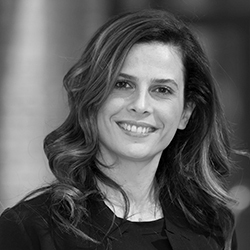
Francesca Bria (IT) is the President of the Italian National Innovation Fund, and Honorary Professor in the Institute for Innovation and Public Purpose at UCL in London. She is a Senior Adviser to the United Nation (UN-Habitat) on digital cities and digital rights. Francesca Bria is leading the DECODE project on data sovereignty in Europe, and is a member of the European Commission high level expert group Economic and Societal Impact of Research and Innovation (ESIR). Francesca has a PhD in Innovation and Entrepreneurship from Imperial College, London and MSc on Digital Economy from University of London, Birbeck. She has been teaching in several universities in the UK and Italy and she has advised Governments, public and private organizations on technology and innovation policy, and its socio-economic and environmental impact.
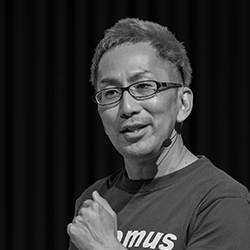
Nobu Ide (JP) started his career at Sharp Corporation in 1995, where he spent 18 years. He joined Wacom in 2013 as General Manager of technology marketing to reinforce Wacom’s leadership position in digital pen solutions. Promoted to SVP heading the company’s Technology Solution Business Unit in 2015, and to Executive Director in 2017, Nobu drove collaborations with key industry partners across the globe. In April, 2018, He assumed the role of Representative Director, President & CEO.
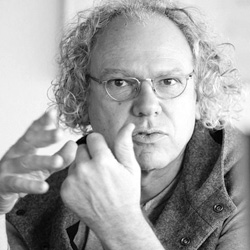
Alexander Mankowsky (DE), born 1957 in Berlin, studied Social Science, Philosophy and Psychology at the ‘Freie Universität Berlin’. In 1989 he started working in the research institute of Daimler in Berlin. The multidisciplinary approach in the institute integrated a wide array of disciplines, from social sciences to artificial intelligence. His current working topics are Futures Studies, focussed on the ever changing culture of mobility, the interdependency of social and technological innovation and other aspects of envisioning paths into the future.

Clara Blume (AT), PhD, is Deputy Director and Head of Art, Science, and Technology at Open Austria, the Austrian Consulate and innovation office in Silicon Valley. She curates and promotes artistic projects at the intersection of art + tech while bridging Austria with the innovation ecosystem in the SF Bay Area. Before, she worked as a professional musician, songwriter, and internationally touring recording artist. Blume has an academic background in fine arts, composition, comparative literature, cultural studies, and history. She is a regular conference speaker and a published author.
2020 S+T+ARTS Prize Advisors
The advisors are renowned international consultants with expertise in this field. They recommend projects and encourage a wide range of potential participants to submit proposals. In addition, they ensure a balance in terms of gender and geographical origin of the participants.
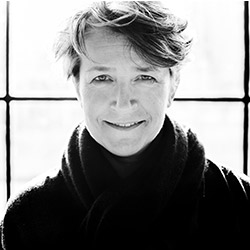
Angelique Spaninks (NL). Combining journalism, criticism and curating Angelique Spaninks has developed a generalist, interdisciplinary practice bridging contemporary art, design, digital culture and bio art & design. Since 2005 she runs MU Hybrid Art House, one of the leading contemporary art institutes in the Netherlands with an outspoken multidisciplinary program as both director and curator. Over the years she has been part of many cultural boards, think tanks and commissions to help further develop cross cultural practice and policy in the Netherlands and abroad.
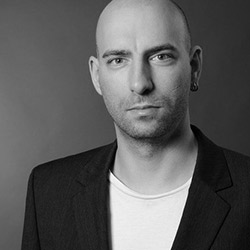
Manuel Kretzer (DE) is professor for Material and Technology at the Dessau Department of Design, Anhalt University of Applied Sciences. His research aims at the creation of dynamic and adaptive objects with a specific focus on new smart and biological material performance and their combination with advanced digital design and fabrication tools. In 2012 he initiated materiability, a free educational platform that attempts to connect architects, designers and artists and provides access to novel material developments and technologies.

Achim Menges (DE) is an architect in Frankfurt and professor at the University of Stuttgart, where he is the founding director of the Institute for Computational Design and Construction (ICD) and the director of the Cluster of Excellence Integrative Computational Design and Construction for Architecture (IntCDC). The focus of Achim Menges’ practice and research is on the development of integrative design at the intersection of computational design methods, robotic manufacturing and construction, as well as advanced material and building systems. His projects and design research has received many international awards, has been published and exhibited worldwide, and form parts of several renowned museum collections.
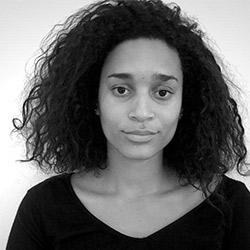
Amanda Masha Caminals (ES) is co-director and curator of the Mutant Institute of Environmental Narratives (IMNA), the laboratory of Matadero Madrid that fosters artistic practices in connection with journalism, science and technology as a response to the challenges of the climate crisis. Previous to that, she directed the CITY STATION of the Environmental Health Clinic by artist Natalie Jeremijenko at the Centre for Contemporary Culture of Barcelona (CCCB). She is founder of the organization Translocalia, a network of artists, curators and designers to plan for the future through art. She holds a BA in Humanities, a Degree in History of Art and an MA Hons in Curating Contemporary Art from the Royal College of Art in London.

Chiaki Hayashi (JP) is the co-founder and is currently the Representative Director of Loftwork Inc. Loftwork succeeds to annually produce over 600 projects. She manages the operation of the company’s creative platform Loftwork.com which has 25,000 creators registered, FabCafe which is a cafe with digital fabrication tools, and a material-centered co-working office MTRL. She is currently Japan Liaison to the Director at the MIT Media Lab. She has recently founded “Hidakuma” which aims to rebuild nature and local creativity.
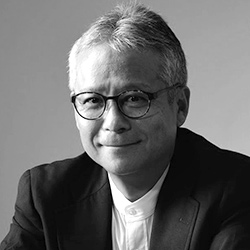
Hiroshi Ishii (JP/US) is the Jerome B. Wiesner Professor of Media Arts and Sciences at the MIT Media Lab. Joining the Media Lab in 1995, he founded the Tangible Media Group to make digital tangible by giving physical and dynamic form to digital information and computation. Here he pursues his visions of “Tangible Bits” (1997) and “Radical Atoms” (2012) that will transcend the current dominant paradigm of Human-Computer Interaction: “Painted Bits” of Graphical User Interfaces. For his visionary work in HCI, he was awarded tenure from MIT in 2001 and the SIGCHI Lifetime Research Award in 2019.
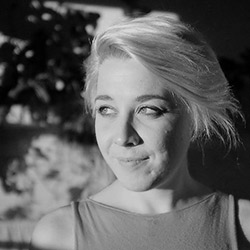
Helene Steiner (AT) is a designer and engineer who works at the interface between technology and science. She co-founded Open Cell with the mission to provide affordable lab space to early-stage startups innovating at the intersection of design and biology. She leads the biomaterial platform at the fashion department at the Royal College of Art. Was previously a postdoc research fellow in Microsoft Research Cambridge and a visiting research fellow in the Tangible Research group of the MIT Media Lab. She holds an MDes from the Bauhaus University, MA from the Royal College of Art and an MSc from Imperial College London.
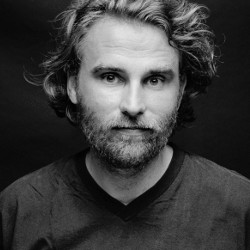
Bastian Schäfer (DE), born in 1980, is a maverick, kitesurfer, TED speaker, father of a boy and a girl and automotive engineer. After working at Volkswagen Design he entered Airbus in 2006 in different projects for A340, A350 and A380. In 2009 he joined the project team that created the award winning Airbus Concept Cabin with its’ bionic structure. Bastian Schäfer is the project leader of the Bionic Partition project where he is focussing on generative design combined with 3D printing technology.

Christiane Luible-Bär (AT) is co-leader of the department Fashion & Technology at the University of Art and Design Linz. Her main field of interest is practice-led design research for the field of fashion design. At this, she focuses on the 3D modelling and virtual simulation of fashion and the influence of digital media on the process of fashion design. She received several international Design Award such as the Lucky Strike Junior Design Award. She collaborated on large European clothing research projects and is today responsible for the several research projects dealing with fashion and technology.
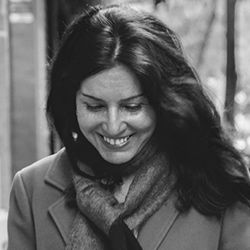
Isabel Berz (ES) is Head of IED REC, the Research and Education Center at the Istituto Europeo di Design, Spain. As Fashion Designer, Researcher and Educator, Isabel launched her own fashion label in 1990. In 2004 she was nominated Director of the Fashion School at IED Madrid, and in 2016 she founded IED REC, Research and Education Center in Madrid as an incubator of research at the intersection of Fashion, Design, Craft and Technology. IED REC creates research programmes like IED CoDesign Project Las Manuelas, IED Craft Platform and is Partner of the EU Cosme Worth Partnership Project and the EU Horizon 2020 Re-FREAM Project.
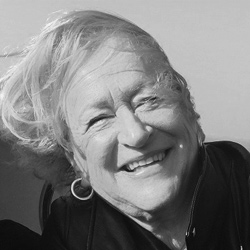
Beatrice de Gelder (NL) is Professor of Cognitive Neuroscience in the Faculty of Psychology and Neuroscience at Maastricht University in Maastricht, The Netherlands, and a member of the Maastricht Brain Imaging Centre (M-BIC). Prior to her current assignments, she was a Senior Scientist at the Martinos Center for Biomedical Imaging, Harvard University. She received an MA in Philosophy, an MA in Experimental Psychology and a PhD in Philosophy from Louvain University in Belgium. Her current research focuses on face and body recognition and, recently, on the neuroscience of art.
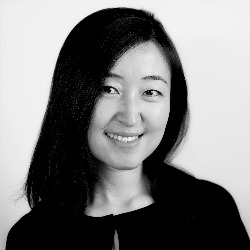
Lining Yao (CN) Lining Yao is an Assistant Professor of Human-Computer Interaction Institute (HCII) at Carnegie Mellon University, School of Computer Science, directing the Morphing Matter Lab (https://morphingmatter.cs.cmu.edu/). Morphing Matter Lab develops materials, tools, and applications of adaptive, dynamic and intelligent morphing matter from nano to macro scales. Research often combines material science, computational fabrication, creative art and design practices. Lining and her lab work anti-disciplinarily, publishing and exhibiting across science, engineering, design and art. Lining gained her Ph.D. at MIT Media Lab in 2017.
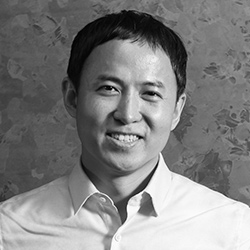
Daehyung Lee (KR) is the Director of Hzone. He currently works as Art Director of CONNECT, BTS, a global initiative developed in collaboration with curators from five major cities – London(Serpentine Galleries), Berlin(Martin Gropius Bau), Buenos Aires(CCK), Seoul(DDP) and New York(Brooklyn Bridge Park). He served as the founding art director of Hyundai Motor Company for six years connecting Tate, LACMA, MMCA, Bloomberg and Blue Prize. He curated “Counterbalance: The Stone and the Mountain” at the Korean Pavilion, La Biennale di Venezia 2017. He also served as artistic advisor to Korea Research Fellow 2018~2020, the interdisciplinary playground ZER01NE (2018), Busan Biennale (2014) and Cheongju Craft Biennale (2013). He has been on the jury for the Ars Electronica Festival’s STARTS Prize since 2018. He holds an MA in Curatorial Studies from Columbia University in New York and curated Korean Eye Moon Generation in 2009 and its nomadic show until 2012 at Saatchi Gallery in London.

Naomi Kaempfer (BE) studied Law and Philosophy and achieved a Bachelor in product engineering, and MSc in Design Management. She specialized in bridging business strategies with international design and creative markets translating solutions from product design into non-standard architecture, among others. After working with ONL on the show for the NSA at Pompidou, she was asked to establish the design and art Platform for manufacturing, which was a novelty in the consumer market in 2003. This platform became the renowned *.MGX for Materialise and the base for ‘i.materialise’. Kaempfer directed this division for 7 years. From 2008-2011, led as Chair professor “the LAB” the technology department at the Design Academy which was Directed by Lidewij Edelkoort at the time. Between 2010-2013, Kaempfer drove the strategic design development of Delhaize Group as the Design Strategy Expert and worked as an independent consultant for 3D printing companies and emerging design platforms.
Reimagining Growth and Decay: Artistic Research in Service of the Circular Economy
Statement of the S+T+ARTS Prize ’20 Jury (Mara Balestrini, Clara Blume, Francesca Bria, Domhnaill Hernon, Nobu Ide, Alexander Mankowsky, Kei Shimada)
From the total of 1,775 entries, 858 projects were directly submitted to S+T+ARTS Prize ’20. For the first time in the history of the S+T+ARTS Prize, the jury wasn’t able to physically gather in Linz for its official jury meeting. In the context of the global COVID-19 health crisis, all travel was suspended, necessitating the first ever virtual jury meeting on May 1-3, 2020. Over the course of three days, the group of 7 members from three continents joined an online discussion; some started the session bright and early with the Californian sunrise while jury members in Tokyo wrapped up the meeting after midnight. A virtual jury process has the distinct advantage of helping to save the environment, time, and travel costs. However, the lack of physical proximity, missed opportunities for casual conversations among peers, and reduced downtime for reflection stripped our verbal exchanges down to their essential bits and pieces. The jury thus emphasized the necessity of physical interaction for in-depth discussions that allow for a thorough evaluation process by addressing a variety of questions that arose during the sessions.
The diversity among this year’s jury members highlighted how cultural prerogatives construct different relations with and perceptions of art and technology. This realization led to a series of spirited debates around the value of art in today’s societies, the nuanced distinction between art and design, and the broad range of contrasting evaluation criteria that on occasion complicated finding a consensus. Another critical point of discussion formed around the inherent difficulty to compare submissions by multi-institutional collaborative projects with DIY homemade installations by individual artists. The former have access to vast financial, material, and logistical means, which may warp the jury’s expectations when contrasted with the latter’s struggle with limited resources; perhaps the future implementation of certain ‘weight classes’ during the submission process could help solve this dilemma.
Lastly, this year’s submissions were overshadowed by the gravitas of the global pandemic and its devastating long-term economic and societal repercussions. Due to the untimely call for this year’s applications, none of the submitted projects was in a position to address the current crisis. After much deliberation and many stimulating discussions allowing for a constant reevaluation of the strongest projects, this jury proceeded to nominate two Grand Prize winners and 10 Honorary Mentions for the S+T+ARTS Prize 2020.
The vast number of submissions by artists, technologists, designers, and scientists from around the world illustrates how the European Commission’s STARTS Program and Prize has merited its international renown: As standard setter among collaborative projects at the intersection of Science, Technology and the Arts, it pushes the envelope of artistic exploration. Projects that embody the STARTS criteria tend to pursue a holistic approach for positive societal change by broadening their scope of influence and action to include our civil society, minorities, and marginalized groups. Many of this year’s submitted projects advocated for shared responsibility in pressing global challenges, while simultaneously giving agency to people by encouraging a participatory and empowering self-starter attitude.
The profound distress over human-machine interaction and the emphasis on human-centered design prevalent in last year’s submissions gave way to a more optimistic outlook on technology. Many submissions used VR to help us empathize with people suffering a variety of distressing circumstances. Others painted a distinctly European trajectory for tech regulation, embracing a third way between big tech surveillance capitalism and big state centralized control. Notably, this year’s entries included very few artworks based on machine learning and/or dealing with society’s troubled relation with this technology. This tendency further illustrates that AI is a moving target, more entangled in our lives than ever but no longer necessarily perceived as an omnipresent threat. On the contrary, the jury observed an optimistic shift towards incorporating AI into DIY artistic practices as yet another tool in an artist’s toolbox, allowing it to enhance human capabilities while also raising awareness for its potential risks and biases.
The jury saw a rising trend in the artistic experimentation with wearable technology and smart textiles. This playful take on new fabrics anticipates a dynamic customization of apparel as well as the sensorial amplification of the wearer. Another notable tendency was apparent in the large number of submissions centered around 3D-printed objects. The increasing availability of 3D printers in private homes, design studios, and academic institutions has triggered a wave of new design approaches that pave the way for a revolutionary rethinking of consumerism and circularity in tomorrow’s economy.
Perhaps the most dominant theme in this year’s submissions is the circular economy, intending to use collective resources in a sustainable manner. Many of the submitted projects, including the Grand Prize winners, deal with climate change and environmental sustainability as the most pressing issues of our time and aim at providing tangible solutions. They respond to an increasingly global movement of citizens demanding concrete action from governments, industry, and society as a whole to deliver on the United Nations’ sustainable development goals and significantly reduce global warming before it is too late. They also respond to some of the main goals articulated in the European Green Deal, such as resource efficiency, the restoration of ecosystems, and the preservation of biodiversity. It further illustrates that the ambitious plan of achieving climate neutrality by the mid-century will require the full mobilization of our ambition, passion, and ingenuity. Additionally, the winner in the category of artistic exploration inspires an urgent political and ethical debate around the necessity for a European approach outlining the risks and benefits of biotech. Born out of a genuine artistic inquiry, the winning projects led to a phase of open experimentation and artistic research, concluding in an artwork that helps us reflect our own relationship with nature and inspire the necessary change in our behavior.
Given the avalanche of chasmic events and unprecedented predicaments steamrolling our world today, this jury wants to encourage mutual learning between scientists, technologists, and artists. By joining forces in a bold out-of-the-box creative practice, they can spark pioneering collaborative ways to address this new set of challenges. Now more than ever, we rely on artists to help us make sense of the world we live in and envision a better path into the future.
Grand Prize – Artistic Exploration
Awarded for artistic exploration and art works where appropriation by the arts has a strong potential to influence or alter the use, deployment, or perception of technology.
Design by Decay, Decay by Design
Andrea Ling
Andrea Ling describes herself as an architect and installation artist. In architecture, most of the parts of a building will end as landfill. Natural ecosystems in contrast do not know about waste. Ling states that in biology, one system’s entropy can be another system’s organization. This insight has motivated her to enter a creative residency at Ginkgo Bioworks—a leader in synthesized biology. Artistic director Christina Agapakis emphasizes that the company’s goal is “(…) to show, through art, the immense potential of synthetic biology and genome engineering.” This is widely seen as a path into a sustainable future, replacing petroleum-based products through grown ingredients for a fuel free future.
Ling created biological artifacts to illustrate and prove the possibility of a paradigm shift in the production of goods: First, through a shared sense of agency between engineer and living material. Second, since biological ecosystems are finite, they aren’t scalable. Overgrowth will always be punished. Biological systems can provide a far more robust system of growth and decay than extractive systems. And third, biology is a value creator using decay to fuel new life. Only by integrating biological systems into design processes can we truly meet our ambitious goals for a sustained renewal.
Finally, Design by Decay, Decay by Design illustrates the potential of combining two key-enabling technologies: ICT and biotechnology. This provides an opportunity to create new products that are sustainable by design. The artwork also exemplifies the importance for a political debate around a European approach to biotech by establishing ethical safeguards for gene editing and balancing both benefits and risks for a broader application of this technology. Andrea Ling’s bold and visionary reimagination of growth and decay in service of the circular economy merits the Grand Prize in the category of Artistic Exploration of the S+T+ARTS Prize ‘20.
Grand Prize – Innovative Collaboration
Awarded for innovative collaboration between industry or technology and the arts (and the cultural and creative sectors in general) that opens new pathway for innovation.
EDEN – Ethique – Durable – Ecologie – Nature
Olga Kisseleva
EDEN won the S+T+ARTS Prize category of Innovative Collaboration because the project exemplified the role that art can play in driving large-scale societal change through interdisciplinary collaboration.
EDEN examines the difference between physical and genetic extinction. This project started as an artistic commission and evolved into a large-scale international collaboration from which the learnings and outcomes are transferable to other global-scale societal challenges facing humanity. EDEN commenced with, and succeeded in, bringing a species of elm tree back into existence in Europe and the project team extended their impact to several species of tree across the globe. The diverse project team was vast—far too many collaborators to reference here—further illustrating the benefits of cross-disciplinary collaboration.
EDEN leverages scientific thinking (genetics) and emerging sensor technology to gain a new understanding of nature. The project leveraged sensor and telecommunication network technology to investigate how trees interact with each other and their environment. They developed a technique to connect trees across the globe in the hope that different species across different locations could communicate and learn from each other. The vast and complex data captured from the tree networks was made audible and visible via a range of exhibits and performances across the world.
In summary, EDEN represents a world-leading example on how art can inform science and how science can inform art—where the combination of both is far greater than the sum, unlocking new knowledge to better humanity. The process and outcomes in EDEN are an exemplar that could, and should, be replicated elsewhere.
Honorary Mentions
c o m p u t e r 1. 0
Victoria Manganiello, Julian Goldman
computer 1.0 is a fascinating installation that is not only a beautiful art piece replicating an imaginary information processing device from the past but also a visually poetic testimony of the stressful dystopian future of the information age.
Victoria Manganiello and Julian Goldman create a canvas using polymer, natural threads, and flowing fluids to represent an analog display that portrays the flow of information but leaves room for comprehension by the observer to what the analog representation, which can also be interpreted either as being the process or the output, means. It is both an intellectual stimulus from a communication design angle and an antithesis to the rigid society that we live in; one that is controlled by zeros and ones and often brings limits to the imagination by the observer.
The artwork is an intimate crossover of tech and textile, and a reminder of how intellectual people of the past have ignited the evolution of communication, starting from a primitive form of design.
Perception iO
Karen Palmer
Perception iO is an interactive installation that provides an intuitive understanding of the importance of transparency and regulation of AI, especially for citizens unfamiliar with the technology. Karen Palmer (aka Storyteller from the Future) creates an immersive experience utilizing film, biometrics, and other technologies to capture and assess the emotional response of participants in the judgment enforcement process, providing a valuable insight into the unarguable dark reality of inequality.
By uncovering unconscious bias in both ourselves and the authorities, it addresses the need for a control mechanism during the conceptualization, development as well as implementation of AI. While AI is oftentimes seen as something that will replace humankind, it is also largely misunderstood. The Perception iO installation in contrast provides an insight into the implications of a flawed process, without necessitating a deep understanding of the complex technology behind it. It thereby motivates the observer to reflect on their own ethical values while also recognizing the positives and negatives of AI.
Precious Plastic Universe
The alternative plastic recycling system.
Dave Hakkens
Precious Plastic opens a new perspective on waste and sustainability, while empowering local communities and creatives. The project is open source with over 400 projects globally using the Precious Plastic recycling system where local recycling workspaces process plastic waste into new products. It works because it’s easy, shareable, and open to everybody, prompting local collective environmental action.
Precious Plastic offers a compelling vision for the future of a Green Europe, following the trajectory of maker spaces, fab-cities, and civic technology hubs. It shows how a global community led by creators, designers, and engineers can be harnessed to tackle one of the world’s most pressing environmental problems. It’s a fresh approach fit for the environmentally conscious youth: It‘s our future—we need to have a say, and we have the tools to create change!
In times of crisis, we are urged to change our behavior and adapt to the new circumstances for the greater good of society. The Precious Plastic Universe pushes us to embrace a new mindset while opening production pathways into a new sustainable future and putting communities first.
Proposals of Collaboration with the Viral Entities
Tame is to Tame, Virophilia
Pei-Ying Lin
Proposals of Collaboration with the Viral Entities is an artistic reflection on our relationship with viruses. Especially in the context of the Corona pandemic, it provides a deeper understanding of our role as human species in the ecosystem we inhabit.
Viruses are a source of evolutionary variation. They cannot self-reproduce and are inert without inserting themselves into a living cell. The core idea in Lynn Margulis’ The Symbiotic Planet is that the engine of evolution can be explained by symbiosis rather than the Darwinian survival of the fittest. Today’s proof lies in the acceptance of the microbiome hosted in our bodies as an acquired organ, essentially turning us into supraorganisms. Viruses are thus no more our enemies than bacteria or human cells.
With Virophilia, Pei-Ying Lin has translated non-mainstream scientific knowledge into a thought-provoking artwork. Her cookbook, set up for the year 2068, where food is prepared with viruses integrated as functional ingredients, hints at productive change in the perception of ourselves in the biosphere: The symbioses between us and the Other opens room for innovation.
Prosthetic Memory
M Eifler
Prosthetic Memory is an experiment composed of journals, video recordings of daily events and thoughts and processed by a personalized AI algorithm that triggers video projections filtered by the relevancy of analogue handwriting in journals. It is an ongoing experiment that might show some different adaptations in the future. With this project, M. Eifler tries to solve the limitation of her permanent loss of long-term memory capabilities, while also asking a series of interesting questions: How can AI capture and confirm human identity? Can an AI algorithm reproduce my own feelings or only generate feelings that I am supposed to be feeling?
The artist illustrates how a DIY homemade AI, solely designed for personal use and generated without any cloud data, can open up an empowering approach to this technology while also enhancing human capabilities. It lives up to the challenge of humanizing a technology that is so often negatively perceived. Prosthetic Memory is thus a highly relevant artistic inquiry into the relationship between humans and artificial intelligence.
Sociality
Paolo Cirio
Paolo Cirio offers a strong artistic provocation that serves as an urgent call for action to challenge tech monopolies and regain democratic accountability over algorithms. With Sociality, he inquires how new internet technologies impact our human psyche and behavior. By coding a scraper to download large volumes of patent data from Google, he depicts the new reality of surveillance capitalism. The 20,000 social media and Big Tech patents featured in Sociality deal with technologies firmly entrenched in the cultural zeitgeist.
This is a powerful artistic manifesto for a more ethical use of technology that subverts intellectual property laws in the interest of the collective intelligence of people that in the first place created the knowledge and data continuously harnessed and extracted in social media platforms. It provides a trajectory for a digital future where it is possible to regulate technology and put it at the service of society. It suggests that we embrace a third way between Big Tech surveillance capitalism and Big State centralized control: a people-first digital future based on democratic control and collective accountability that can be championed by Europe.
SOMEONE
Lauren Lee McCarthy
SOMEONE is a distributed installation and exhibition where visitors are invited to act as a human version of the Amazon smart speaker Alexa. The homes of four people have been augmented with bespoke smart devices. Through a command center with four computers, visitors can hear the occupants of the “smart homes” call out for “Someone,” prompting them to step in as their home automation assistant and respond to their needs.
The exhibition addresses timely topics that have emerged in the intersection of smart technologies and everyday life, in particular surveillance and control. The piece questions whether these technologies give us convenience and improved quality of life or actually threaten our autonomy, agency, and privacy. Furthermore, by having the visitor act as a smart device themselves, the exhibition questions labor relations that exist behind the scenes of our apparently seamless connected world. These are pressing questions in a time when our most intimate spaces and routines are becoming increasingly embedded with “smart” devices that collect and share sensitive data about ourselves and our individual and social behaviors.
Spoiled Spores
Avril Corroon
Spoiled Spores is an artistic provocation on the topic of the housing crisis in Ireland and the UK. In the latest estimate, the UK requires 1 million homes to provide everyone with worthy living conditions. Within the rental community the standard of home is often so poor that toxic mold is commonplace.
Corroon harvests mold from properties in the UK and Ireland from which she crafts a range of artisanal cheeses. The various cheeses are exhibited within industrial fridges that resemble the buildings from which the mold was harvested. The critical aspect to the work is that the cheeses are toxic—they are poisonous to consume and present a real health hazard, as does the mold from which they are harvested.
The housing crisis has placed even more stress on rental communities during the COVID-19 pandemic and this issue will grow as more people move to urban areas and “mega cities” of the future. Spoiled Spores is an excellent example of the role art can play in provoking thought and action. It looks at a social issue from a new perspective. Not only does it look at a problem of today, it also addresses an issue of growing concern for the future.
The Wrong
David Quiles Guilló
As the COVID-19 pandemic and social distancing shuts down vast swathes of local and global activity, this piece shows an alternative yet ambitious new path for the arts and culture. The Wrong Biennale is a collaborative effort to create and promote digital art and culture across the world, launching a global art biennale open to participation, happening both online and offline, and harnessing the potential of collaboration and the internet.
Furthermore, the concept aims to connect the world through online pavilions that are virtually curated spaces and offline exhibitions at embassies, institutions, art spaces, galleries, and artist-run spaces in cities. The event is organized following a bottom-up approach through which an extended team of curators appoint themselves to feature what they like best of the new digital art scene today and artists also appoint themselves via open calls. Since 2013, more than 5,500 artists and curators have officially participated in The Wrong Biennale—a concept that could prove key to the flourishing of the arts and culture in post pandemic times.
TransVision
Jiabao Li
TransVision is an artistic provocation on the role that technology plays in mediating and controlling our perception of the world. Presented as a set of wearable devices in three scenarios, it shows how technology mediates our sense of vision and controls our perception. The work is prescient given the proliferation of mobile screen-based technologies in the last decade and the emerging understanding of the role that digital technology plays across society. We have quickly entered a world where digital loneliness is a pandemic—one that has crept up on us without much warning yet penetrates all aspects of modern society.
In hyperallergenic vision, the user develops a hypersensitivity to the color red as a reflection on the ways that we have become hypersensitive to certain information presented online. In tactile vision, the user is alerted to the fact that we easily become immersed in echo chambers owing to the bias of our online networks and our methods of receiving information. In commoditized vision, the user is alerted to the fact that our existence has been commoditized through the monetization of our time, attention, and ultimately our existence itself.
Nominations
aqua_forensic
Underwater Interception of Biotweaking in Aquatocene
Robertina Šebjanič, Gjino Šutić
Be Water by Hong Kongers
Dedicated to the Hong Kong protesters by Eric Siu & Joel Kwong
BETAlight
Barbro Scholz with Esther Stühmer, Axel Sylvester and Tanja Döring
CMD: Experiment in Bio Algorithmic Politics
Michael Sedbon
Code of Conscience
Code of Conscience
Compression Cradle
Lucy McRae
CONTAIN / Open Cell – Mobile COVID19 Emergency Testing Facilities
Open Cell + worldwide contributors
Hale: An Upgrade on Patient Attire
Mariam Ibrahim
Hybrid Living Materials
The Mediated Matter Group
INNER VALUES
Tobias Trübenbacher
Re:flex
Pierre Azalbert, Benton Ching, Karlijn Sibbel
Re3 Glass
Faidra Oikonomopoulou, Telesilla Bristogianni
Sounding Soil
Marcus Maeder
Stymphalian Birds
Audrey Briot
The Substitute
Alexandra Daisy Ginsberg
The Net Wanderer – A tour of suspended handshakes
Cheng Guo
Topographie Digitale
DataPaulette
Voicing Borders
Irakli Sabekia



